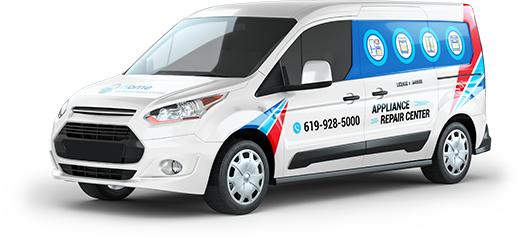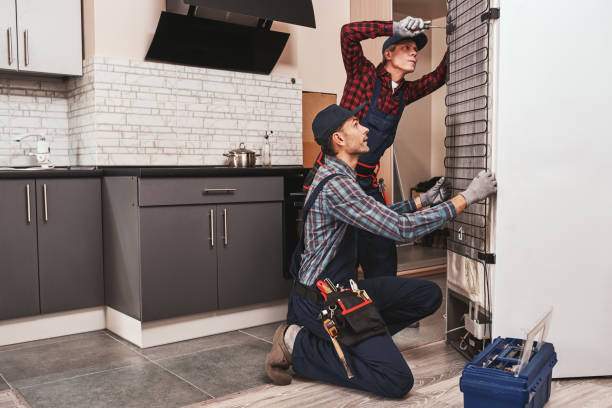The most common lack of cold with a working motor-compressor occurs in the refrigerator compartment. This behavior of the refrigerator may indicate the following malfunctions.
- Cooling mode switching valve burned out (in the single-compressor refrigerators with independent temperature control in the chambers)
In single-compressor refrigerators with droplet defrosting in the refrigerating chamber, manual defrosting in the freezer compartment, and independent control of the temperature in the compartments, cooling regulation is performed due to the electromagnetic valve. It switches the refrigerator operation modes between the cooling of the freezer compartment only and simultaneous cooling of both the freezer and refrigerating compartments. If the valve is stuck in the “freezer only cooling” position, the fridge compartment does not cool.
- Freon leak in the refrigerating circuit of the refrigerating compartment (in twin-compressor models)
The refrigerant in the refrigerator circulates through the hermetic circuit. Due to the pressure drop caused by the different cross-sections of the circuit tubes, the freon, coming from a thin capillary tube into the “wide” evaporator, boils and takes heat from the chamber. If the refrigerating compartment circuit is not sealed, the refrigerator capacity drops, and the temperature in this compartment begins to rise. The compressor of the refrigerating chamber works for some time without interruption, but then it switches off and does not switch on again.
Most often, the leakage occurs in the evaporator or at the tube joints due to corrosion.
- Capillary tube clogging in the refrigerating chamber (in double compressor models)
The capillary tube is the narrowest part of the refrigerant piping, necessary to create a pressure difference in the system. Therefore, it is in the capillary tube that clogs form.
Together with freon, machine oil from the compressor circulates through the hermetic circuit of the refrigeration chamber. In the process of interaction of the oil with the refrigerant, paraffin is formed. They are deposited in the capillary tube and create a blockage. The freon circulation is disrupted, the refrigerant does not reach the evaporator, and the refrigeration chamber stops cooling.
- The refrigerator compartment seal is damaged.
The rubber gasket on the door ensures a tight connection between the door and the refrigerator body. If it is damaged (loose, torn, or cracked), the warm air enters the refrigerating chamber, and the temperature there increases.
- Refrigeration compartment compressor wedge or broken valves (in dual-compressor models)
A functioning compressor motor pumps freon into the evaporator, “forcing” it to circulate through the circuit. However, over time, the internal parts of the compressor wear out and mechanical failures occur
- The temperature sensor (in models with electronic control) detects the temperature in the chamber, and transmits the data to the control unit. If no data is received from the sensor, the cooling compartment will not turn on. Thermistor in temperature sensors fails or contacts become oxidized or burned.
- Freezer compartment seal is worn out
The rubber seal on the freezer door protects the compartment from warm ambient air. Unfortunately, due to mechanical damage or wear, the rubber gets damaged, heat enters the freezer, and the temperature in the freezer rises.
This situation does not occur often, since the freezer is opened less frequently than the refrigerator compartment, and as a rule, the seal on it lasts a very long time.
8. Cooling mode switching valve burned out (in single-compressor refrigerators with independent temperature control in the chambers)
In single-compressor refrigerators with independent control of the temperature in the chambers (with “drop” defrosting in the fridge compartment and manual defrosting in the freezer), there is a valve, which switches the cooling circuits. The first circuit cools only the freezing chamber, while the second circuit cools the freezing chamber and refrigerating compartment at the same time. If the valve is stuck in the “freezer and refrigerator compartment” position, the freezer compartment is not cold enough and the temperature in it rises.
The best solution is to call a master at home or contact the service center. This calls us, and we will give you the best repair service AT ALL SAN DIEGO. With our superior performance, absolute accuracy, extensive knowledge and experience, fast and efficient service, friendly attitude, free maintenance consultation, and after-service warranty, we are proud to say that we are the leading Repair Service Provider in San Diego. Customer satisfaction is our top priority, and we are always committed to what we do. We are open 24/7 a week, on weekends and holidays. Our technicians will come to you 15 minutes after your call in urgent cases. Give us a call, and SAN DIEGO APPLIANCE REPAIR will solve any problem.
Contact us
 619-928-5000
619-928-5000  Request Service
Request Service 
